Merida Colonial Home Purchasing Tips
In the process of putting the final touches on our new home, we were lucky enough to meet a man named Jorge Sosa, whose business is called The Handyman. Jorge, who was raised in California, worked many years for large maquiladoras here in Merida, managing their buildings, building their buildings and dealing with construction issues. He struck out on his own and created this small company, Handyman, to provide a wide range of services to homeowners in Merida.
>
While Jorge's service is a bit more expensive than hiring the guy down the street who may or may not know how to put up that wall you've been wanting around your garden, he earns that extra money with a good understanding of how things work around here, an understanding of the tastes of most Americans and Canadians, and a team of capable, clean workers who clean up after themselves. And he guarantees his work, so if something isn't right, he'll come back and fix it. And for those of you still learning Spanish, Jorge speaks perfect English.
We asked Jorge to give us a few tips about what he looks for when evaluating a colonial home in this area, something that he has helped various friends with over the years. Since he has experience fixing everything, we figured he might be a good person to tap for this information. The following are some tips on what to look for when buying a colonial (or any other) home here in the Yucatan.
First Things First: Walls
When inspecting a colonial home that you want to buy, the first thing you'll want to do is review the condition and placement of the walls. You are probably going to find cracks and even plaster falling off the walls. These are nothing to worry about as they can be easily repaired. The most important thing to determine is if the walls are made from cement block or from stone. The stone wall construction is called mamposteria, and walls made this way can be anywhere from one to two and a half feet wide. Of course, we all love the old stone walls, but there are some things to keep in mind when you are assessing them.
Repairing these walls is done all the time, and if the house is more than ten years old, some repair will probably be in order. If there are spots of excessive humidity on the walls, repair will consist of digging out the old plaster around the stones and replacing it with new plaster. This is a messy process (one you don't want to have to live in the midst of...) because it creates a lot of very fine polvo (dust).
Look carefully at where the walls are placed. Cement block walls are easily moved or altered. You want a door there? a window? No problem! But if that wall is made of mamposteria, creating a new door or window in that space may not be so easy... in fact, it may not be possible without tearing down a large section of the wall. These walls were often built without supporting columns or reinforcement, so removing or altering them may compromise another wall or the ceiling. It can be done, but no contractor can give you an honest bid for this type of project, since it is impossible to know what the opening will need in time and materials until the job has been started.
Run your hands along the walls. If a very fine dust comes off on your fingers, that probably means the walls are painted with cal paint. This is basically a form of very thin plaster with color added to it. While this type of paint allows the old stone walls to breathe, it also tends to stain and flake off. You should count on having to repaint every few years, depending on the humidity in your house. If the cal paint is on an outside wall, you will probably have to paint every second year to keep it looking beautiful. There are vinyl paints here, of course (called vinilica), and they can be used on any kind of wall. If you use vinilica on a mamposteria wall, you run the risk of bubbling as the wall releases its humidity over time. Vinilica on a cement block wall will last for a long time, as long as there are no humidity problems.
Another thing to keep in mind is the height of the walls. When assessing how much it is going to cost to paint a room, keep in mind that many of these old colonials have very high ceilings. This fact almost doubles the cost of painting a room because of the increased area of the walls. Painters will also have to set up andamios (scaffolding) in order to paint the walls and ceilings. You haven't lived until you've watched painters setting up scaffolding around your precious furniture, balancing on old boards with full buckets of paint twenty feet in the air! Plan to paint before you move in if at all possible.
Up On The Roof
When you decide to get serious about a house, make an appointment with your realtor to see the roof (if you haven't already). It is important that you go up on the roof and inspect it for yourself. If you are unable to climb, bring a friend who can do this for you and perhaps take photographs for you as well.
All colonial roofs need to be sealed with a very heavy latex sealant called impermeabilizante. (Working Gringos Note: we felt we had really become locals when we could finally pronounce that word!) Unlike with walls, with a roof you do need to worry about cracks. The slightest crack in a roof will mean a leak in your house. If the roof has not been sealed at all, you will need to consider the additional cost of doing this in your estimates. A perfectly sealed roof will look perfectly clean and painted white (there are black and red impermeabilizantes, but they are rarely used). The proper sealing job for a colonial roof requires several coats of sealant and cloth in between to reinforce the layers. If the house appears to have been sealed, get down on your knees and feel the surface. If it feels thick and slightly rubbery, that's a good thing! You also should be able to find traces of the cloth that was applied. If instead it looks like the roof was sealed with paint and you can see fine cracks everywhere, that probably means that the sealant was watered down and/or no material was used.
In this case, you don't know what you are getting into. The thick coat may have been applied just to groom the house for sale, but it could also mean that the house has leaks and the job was done to temporarily plug the leaks. If you go inside the house, look up and you can see water marks or humidity stains on the ceiling, then you can assume that the job was not done well. Yes, this can be fixed, but fixing it right usually means resealing the entire roof.
In Merida, everybody has a friend who has a cousin who seals roofs. Most people believe that sealing a roof is as simple as applying paint. If you ask around, you'll find that the plumber, the painter and even the gardener will do the job if you pay them. In reality, sealing a roof is tricky. Although it isn't rocket science, it does have certain procedures that need to be followed precisely. And it is a very difficult job. Imagine a guy on your roof in the middle of the day in 90-plus degree heat, applying blinding white material to the roof. There is a lot of room for error here, but errors are the one thing you need to avoid. Even professionals can make mistakes, but at least a professional applier will honor a warranty and will repair the mistake.
One last thing while you are on the roof. Look around and see what kind of water storage unit is on the roof. Although the old cement type of tinaco blends in beautifully with an old house, they aren't particularly healthy. These cement water tanks do not seal well and are not hygienic. Replacing this with a plastic, germ-free unit is a must.
Going Down... the Fosa Septica
In the Yucatan, we do not have city sewers like many cities in the world, so we depend on individual septic systems. Please read this very informative Yucatan Living article before you ask any questions so you can understand how they work.
As a buyer, the important thing to know is what kind of system is in place. In a newly renovated home, you probably don't need to worry about this. But in homes that have undergone little or no renovation, there are some things to consider. Many homes downtown were originally part of one single mansion that occupied most of a city block. Over time, these homes were divided and sold as independent houses. If this is the scenario for your house, keep in mind that the house you are buying may share the septic system with one or more houses on the block. So when you are starting to plan for renovation of that house, be sure to count on putting in a new fosa septica that serves just your home.
Plumbing and Electricity
As I've mentioned above, if you are planning to buy a renovated home, none of this applies... probably. When a house has been occupied by a Yucatecan family or closed for many years, these things will almost surely be an issue.
With a renovated home, be sure to ask for the electrical and plumbing plans from the seller, so it will be easier to find pipes or installations. You can't use a stud finder in an all-cement house! If the home is not previously renovated, you will probably be able to see the electrical wire running outside of the cement or stone walls. When these things came to this part of the world, families put in galvanized pipes for plumbing and single hard wire for electrical wiring. All of it was done on the walls, so nothing is hidden. If this is what you see, it may be functional, but it probably won't work well with modern appliances, computers, etc. Most likely, these installations will need to be totally replaced.
Even if the seller says that this sort of work has been done, and some of the installations are already hidden, check the faucets, rooftops and gardens to see if you can see any old and deteriorated galvanized pipe that will need to be replaced. Take a screw driver with you and open an outlet to see if it is a single wire with its installation bristle. If you find this, you can probably count on rewiring the house and having some major plumbing jobs. If instead you find copper pipes or, better yet, PVC or CPVC and flexible multistring wiring, then you probably won't have much work to do.
Last Thoughts
From stories we have heard, the earliest immigrants to Merida from the US and Canada were often unpleasantly surprised by things they needed to do to their homes in order to live in the comfort they were accustomed to. Still, they bought the houses, they renovated them and now they are very happy here. Hopefully, you will take the comments above as tips to improve your buying skills, not as stories to scare you away from buying. There is nothing in a colonial house that cannot be fixed... it's only a matter of money and time. And dust. Now that you have read this article, you won't be caught off guard and will have a better understanding of what you will need to invest in the house you are buying.




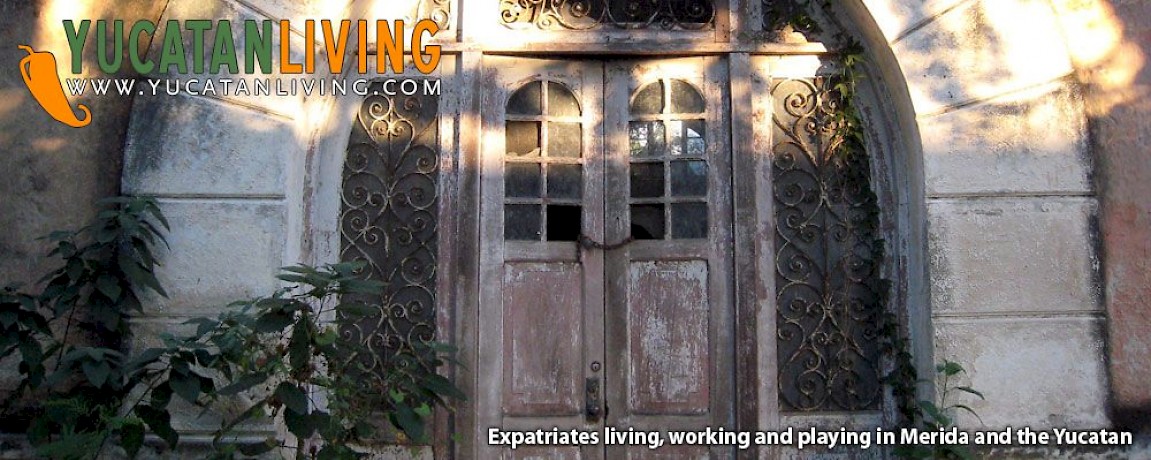


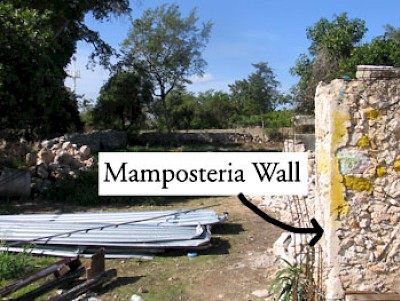
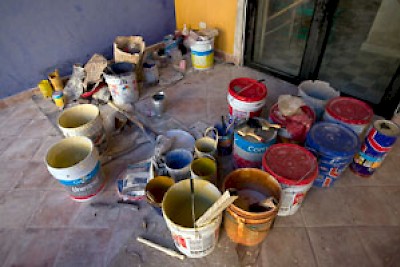
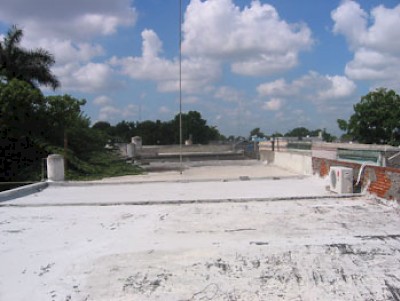
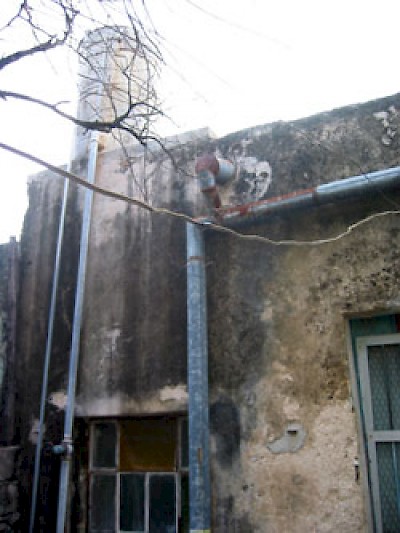

Comments
Carlos Daniel Gallegos 17 years ago
May I offer to your readers an option to rent a home in Merida or the Yucatan. Many gringos get down there and find out it was not what they expect, and return back to the USA. I've found affordable, nice, homes for rent around $300 usd and less in the Diario de Yucatans Classified section.
The last time I rented a home in Merida, I paid 3 prices: The last months rent, Deposit, and a Contract Fee - all in the equal amount. For example: $1,400.00 Pesos X 3. Is this typical?
Reply
Carlos Daniel Gallegos 17 years ago
Would like to Talk with Handy Man about issues raised by my wife's Yucateca father in renting a home. My wife’s father, 100% Yucateco, says the repairs of a home being rented is on the renter, not the Home Owner. Is this correct?
Reply
Gregg 17 years ago
Hi Laura. We recently bought a house in Merida, with the enourmous help and patience of Joel w/Merida Homes, and are intrested in greening our home like you. To start I've been looking for FIDE appliances (US equivalent would be Energy Star) and researching PV solar panels and the like. I went to BP Solar and Kyocera's web sites to see who are dealer/installers in Merida, and found a couple of links. This web site has been a valuable source of inormation for us. Please post any green information you may find and I will do the same.
Reply
Jorge "the Handyman" Sosa 17 years ago
Hola Brenda ... Id be more than happy to help out anybody seeking advice for their homes. I find it very rewarding to be able to allow the ex'pats to spend more time enjoying their homes instead of struggling to understand or get things done here. I truly appreciate Yucatan living for allowing me the opportunity to reach you guys and answer all your questions. .
I have heard far too often how frustrating it has been for many people to settle down in Yucatan , so to be able help in some way prevent this sounds great .
I currently don’t offer home inspection in my services , But if you feel I can help you in some way , please contact me through my e-mail ( handyman@prodigy.net.mx ) so we can arrange something .
Reply
Brenda Thornton 17 years ago
Jorge,
I know that it was mentioned that there is no home inspection company in the Merida area, but we are considering purchasing a home there, and were we to do so, we would love to have you evaluate the home for us and we would be more than willing to get a report from you and pay for it at what you would consider a fair rate.
Reply
Jorge "the Handyman" Sosa 17 years ago
Tito…. Many people share your point of view on how ugly the black “Rotoplas†water deposits look in their homes. However that’s an easy fix, The Tinacos are paintable. Shaped almost like a large milk can, with a little imagination you can really make them into a feature on the house, or simply use the same colors you used on your house and let the Tinaco blend with the enviroment instead of outstand in contrast.
Reply
Jorge "the Handyman" Sosa 17 years ago
Laura and Carlos . Thank you , I look foward to meeting you some day soon . If you have any questions related to homes in Merida , please share them through this forum . If you have somthing more specifical which you belive I can help you with , please feel free to contact me through my e-mail handyman@prodigy.net.mx
Reply
Jorge "the Handyman" Sosa 17 years ago
Don Henry, the problem with concrete water deposits (in the TINACOS) is that they do not close/seal shut. The lid basically rests on top of the rim leaving a large gap all around. Cleaning them is not an issue, keeping them clean is. I have washed down many tinacos and have found everything from insects to small animals floating around inside. On the beach you have an additional problem, depending on where your tinaco is located, with sand that can be blown into the tinaco and make its way into your pipes.
If the tinaco is not at least partially full, it is very likely that it will be blown away in a hurricane, so if you do decide to change your concrete one, make sure the plastic one is secured and always fill it when a hurricane is coming. Keep in mind that if you replace a concrete tinaco you will need a cement base installed to have the plastic one sit. Without it the container will warp and crack in very little time.
There is ALUMINUM SCREEN widely available in Yucatan however there are better products available in the market nowadays. The aluminum screen is rigid and as such very easy to break. On the beach it will become bristle in very little time since it is not anodized. I still use Aluminum screen once in a while, but mainly because I need its strength to help me hold the screen or to discourage pets to scratch it off. I highly recommend fiberglass filament screens. It is elastic but very strong, and unlike aluminum, at a very short distance you can barely notice it's there.
As far as leaving APPLIANCES RUNNING for extend periods of time at a beach home, I would not recommend this. I would do completely the opposite and unplug every electrical equipment if you plan to leave the house closed for several months at a time. On the beach, it is common to have power failures, and have the electricity come back at too high or too low of a voltage. This can eventually burn up your equipment.
As far as putting everything in garbage bags, I believe it would be better if you store your personal items in bags made of fabric. Due to humidity, it is best to have your belongings in bags that “breatheâ€. It is also a good idea to cover your furniture with old sheets or cheap fabric.
MAGNETIC WATER SOFTENERS designed for home use are relatively new. Most of what is available can only be purchased through independent distributors, and are rarely available in home improvement stores or plumbing supply shops. This alone makes me skeptical about its effectiveness. The theory behind magnetic water softeners is to pass the flow of water in the pipes through a magnetic field. This allegedly changes the electrical charge of the ions in the hard water so that the minerals cannot form lime scale. Only the effective hardness is claimed to be reduced through magnetic treatment. No calcium is removed from the water. Instead, the theory is that the magnetic field decreases the tendency to form scale. In Yucatan, the condition of our water is challenging enough for the best of the equipment available, so I'd be hesitant to try something here that is still in debate in places where the water is not as hard as ours.
Finding your SUMIDERO or FOSA SEPTICA should not be very hard to do. It is very rare for a home owner to hide it. Usually you will find it around an area next to the house, near the kitchen or a bathroom. You will see a square-shaped slab of cement, sometimes with thin metal bars forming a handle, sealed with cement around it. This would be the lid for the septic tank, and believe me; you don’t want to open it!
Septic tanks, under normal conditions, take more than a lifetime to be filled. Inside them there is living bacteria that is gradually breaking up the contents into water which then overflows into filters or wells. What remains after the bacteria has done its job is so little that it takes an enormous amount of time for it to fill even a small tank. As long as the bacteria is left undisturbed, you should not have a problem.
Most people in Yucatan live their entire lives without ever having to open or clean their septic systems. For example at my mother’s house, we were 6 brothers and sisters living with mom, dad and my grandmother. The house was originally a 2 bedroom, one bathroom house that my parents expanded into something larger. They never changed the septic system. I am now 40 years old, and to this day my mom lives in the same house and has never cleaned her septic system.
In my work I had to empty several sumideros. The most common reasons are: a)People connecting the washing machines to the septic system, thus altering the chemistry and killing the bacteria. b)People connecting the rain pipes into the sumidero, causing it to fill up too fast in a big rain. And sorry to say, c) people opening the fosa septica for no particular reason, allowing air and sunlight, thus deteriorating the process.
I hope this information was helpful!
Reply
Tito 17 years ago
The cement tinacos are usually made from asbestos cement, and using water from them is about as healthy as that from ugly black Rotoplas plastic tinacos.
Reply
Laura Ferran-Algieri 17 years ago
Hola Jorge,
Gracias por la informacion, or so everyone understands, thanks for you for the information.
Carlos and I am making plans to move to Merida a.s.p.a. I think we would like to be close to the center, but that will be decided after we visit and check thing out. Maybe, then we can meet, have dinner together and talk. I have more then construction questions.
I am definitely into creating, conserving and maintaining the environment and helping to get the word out.
I'm interested in rain water collection, solar energy, composting and composting toilets, grey water recovery and re-use, organic farming and eating, natural and chemical free swimming pools, etc., etc.
I will be moving with my elderly in-laws and need to create a casita on the property so they can live with us, they are very independent but need to be very close.
Muchas gracias, again.
Laura Ferran-Algieri
Love, Peace, Health and Prosperity to everyone.
Reply
Henry 17 years ago
Jorge:
I have purchased a home on the North coast and had a few questions about issues there.
1. You mention the concrete tinacos are not hygienic. I've got them. Is there a way to safely clean them (bleach, iodiflor, etc) or should I just change them out to rotoplasts? I like the extra weight being right on the shore, but I guess full, they're probably both about the same.
2. I'm looking at having screens made for my windows and doors. Is aluminum screen available or will I be using vinyl?
3. Are there benefits to keeping appliances running? I would normally unplug my refrigerator and prop the doors open when I'm not present. Is this wise in this environment? How about microwaves? Besides the obvious act of putting everything in a garbage bag, is there anything else suggested?
4. Do the magnetic water softeners really work?
5. Is there an easy way to track my fosa septica to check my filtro or the sediment area? My home was probably only used as a summer/holy week cottage, so I'm not sure it's got much capacity, and I'd like to just check.
Thanks for your replies to all our questions. We all love to hear about the practical aspects of life.
Henry
Reply
« Back (80 to 91 comments)Next »